The NBA Draft Lottery is an annual event since 1985 where NBA teams that didn't make the playoffs participate in a lottery to determine the draft order for the upcoming NBA draft. The lottery winner gets the first pick, allowing them to select top amateur U.S. college or international players. Teams involved are often called 'lottery teams,' and the selected players are known as 'lottery picks.'
1966: NBA Revamped Draft System
In 1966, the NBA revamped its draft system and introduced a coin flip between the worst teams in each conference to determine who would obtain the first overall draft pick. The loser of the coin flip would get the second pick, and the remaining first-round picks were determined in reverse order of each team's win-loss record.
1984: NBA Introduced Lottery System
Following the 1984 coin flip, the NBA introduced the lottery system to prevent teams from deliberately losing games to secure a better draft pick. This lottery system in 1984 involved drawing envelopes of non-playoff teams to determine the draft order, with each team having an equal chance at the first pick.
1985: NBA Draft Lottery Started
In 1985, the NBA draft lottery was established, allowing teams that missed the playoffs to participate in a lottery process to determine the draft order. The lottery winner would get the first selection in the NBA draft, giving them rights to amateur U.S. college basketball players and other eligible players.
1985: Introduction of the draft lottery
In 1985, the NBA draft lottery was introduced to determine the order of selection for teams that did not make the playoffs.
1985: New York Knicks Win First Lottery
In 1985, the New York Knicks won the first NBA draft lottery and selected Patrick Ewing. However, there was speculation that the lottery was rigged to ensure the Knicks, in a large market, would get the first pick.
1985: Lottery Introduced
Since the lottery was introduced in 1985, only 21 of 30 NBA teams have won the lottery.
1985: Speculation of NBA Fixing Draft Lottery
Speculation originated with the 1985 draft lottery that sent Patrick Ewing to New York, with the theory being that the NBA wanted to send the best player in the draft to New York to increase ratings in a large television market. Some speculated that the envelope containing the Knicks logo was refrigerated beforehand, enabling David Stern to recognize and select it.
1987: NBA Modified Lottery System
In 1987, the NBA modified the lottery system to determine the first three picks via lottery. After the lottery, the remaining non-playoff teams selected in reverse order of their win-loss record. This change meant that the team with the worst record could pick no lower than fourth.
1988: Miami Heat joined as expansion team
In 1988, the Miami Heat joined the NBA as an expansion team, becoming one of the teams that has never won the first overall pick in the draft lottery.
1989: Envelope System Still in Use
The envelope lottery system, which had been used since 1985, remained in place through 1989 before being replaced.
1990: Envelope system replaced by weighted lottery system
In 1990 the envelope lottery system was replaced by the weighted lottery system.
1990: NBA Changed Lottery Format to Weighted System
In 1990, the NBA changed the lottery format to give the team with the worst record the best chance of landing the first pick, with the worst team having 11 out of 66 chances. The weighted system was used to determine the first three picks, with the rest of the teams selecting in reverse order of their win-loss records.
1990: Weighted Lottery Introduced
Since the weighted lottery system was introduced in 1990, only seven teams with the worst record went on to win the lottery while only four teams with the second-worst record have won the lottery.
October 1993: NBA Modified Lottery System to Increase Chances for Worst Teams
In October 1993, the NBA modified the lottery system to give the team with the worst record a higher chance to win the draft lottery, increasing their chances from 16.7% to 25%, and decreasing the chances for better teams.
1993: Orlando Magic Won Lottery with 1.5% Chance
In 1993, the Orlando Magic won the NBA draft lottery with only a 1.5% chance, marking the largest upset in the lottery's history.
1993: New Lottery System with Numbered Balls
In 1993, the new NBA lottery system used 14 numbered table tennis balls. A four-number combination was drawn to determine the winner. Prior to the draft, the NBA assigned 1,000 possible combinations to the non-playoff teams, repeating the process to determine the second and third picks.
1994: New lottery system continues with numbered balls
In 1994, the new NBA lottery system with numbered table tennis balls was used again.
1995: Memphis Grizzlies joined as expansion team
In 1995, the Memphis Grizzlies (formerly located in Vancouver) joined the NBA as an expansion team, becoming one of the teams that has never won the first overall pick in the draft lottery.
1995: Agreement with Expansion Franchises
In 1995, the NBA reached an agreement with the expansion franchises, the Toronto Raptors and the Vancouver Grizzlies, stating that neither team would be eligible to obtain the first overall pick in the 1996, 1997 and 1998 drafts.
1996: Raptors Won Lottery but Forced to Settle for Second Pick
In 1996, the Toronto Raptors won the lottery but were forced to settle for the second pick due to a previous agreement. The Philadelphia 76ers received the first pick as a result.
1997: Raptors ineligible for the first overall pick.
In 1997, as a result of a previous agreement, the Toronto Raptors were ineligible for the first overall pick.
1998: Grizzlies Won Lottery but Forced to Settle for Second Pick
In 1998, the Vancouver Grizzlies won the lottery but had to pick second, while the L.A. Clippers obtained the first pick because of their agreement with the NBA.
1999: Charlotte Hornets Overcame Long Odds in Draft Lottery
In 1999, the Charlotte Hornets overcame long odds in the draft lottery when they won the third pick despite having the best record among all non-playoff teams. The Hornets only had a 1.83% chance of winning a top-three pick.
2006: Raptors Picked First
In 2006, the Toronto Raptors won the lottery as the fifth-worst non-playoff team and finally picked first.
2008: Chicago Bulls Won Lottery with 1.7% Chance
In 2008, the Chicago Bulls won the NBA draft lottery with only a 1.7% chance, marking one of the second-largest upsets in the lottery's history.
2014: Changes Proposed in 2014 to discourage high loss seasons
In 2014 changes were proposed to disincentivize high loss seasons by flattening the odds of getting the top pick and increasing the likelihood of the worst teams having to pick later in the draft.
2014: Cleveland Cavaliers Won Lottery with 1.7% Chance
In 2014, the Cleveland Cavaliers won the NBA draft lottery with only a 1.7% chance, marking one of the second-largest upsets in the lottery's history.
2014: NBA Board Voted on Proposed Lottery Reform
In 2014, the NBA Board of Governors voted on a proposed lottery reform that would have given the four worst teams identical odds at winning the top pick, but the reform failed to pass with a 17-13 vote, short of the required 23 votes.
2016: Speculation over Lottery Legitimacy
In 2016, speculation arose about the NBA draft's legitimacy when Dikembe Mutombo prematurely tweeted congratulations to the Philadelphia 76ers before the lottery, which they ultimately won. Additionally, every spot remained the same as before the event, raising further questions.
May 4, 2017: Magic Johnson Assured Lakers Would Acquire Top-3 Pick
On May 4, 2017, Lakers executive Magic Johnson assured head coach Luke Walton that the Lakers would acquire a top-3 pick for the 2017 NBA draft after an interview Walton had on May 4, 2017, twelve days before the draft lottery commenced. This raised further questions about the draft process when the Lakers moved up to the second pick.
2017: Boston Celtics owned #1 pick via trade
In 2017, the Boston Celtics owned the #1 pick in the NBA draft lottery due to a previous trade with the Brooklyn Nets; however, they subsequently traded the pick to the Philadelphia 76ers a few days before the draft.
2019: NBA Changed Lottery Odds
After the 2019 draft, the NBA modified the lottery odds to give the bottom three teams an equal 14% chance of winning the top pick. They also increased the number of teams selected in the lottery from three to four.
2019: NBA Implemented New Lottery System
In response to teams deliberately seeking high-loss seasons, the NBA implemented a new lottery system beginning with the 2019 NBA draft. The new lottery system gave the worst three teams equal odds at the first overall pick and expanding the lottery to the top four picks (up from the top three picks).
2019: Tie-Breaking Procedure Implemented
In the event that teams finish with the same record since 2019, each tied team receives the average of the total number of combinations for the positions that they occupy. A coin flip is then used to determine which team or teams receive the extra combination, and who receives the earlier pick if neither wins one of the first four picks.
2019: Picks Determined By Regular Season Record
Prior to the 2019 draft, after the first three teams were determined by the lottery, the remaining picks were determined by regular season record with the worst teams getting the highest picks. This ensured each team could drop no more than three spots from its projected draft position.
2019: Number of Lottery Winners Increased
Since the 2019 draft, the number of lottery winners was increased from 3 to 4, with the remaining picks still assigned based on regular season record. This means a team can drop no more than four spots from its seeded position to its actual draft position.
2019: Lottery Odds Updated
Since the 2019 draft, the odds of each seed winning the first pick were updated.
2019: Team Chance for Specific Picks Listed
The following table lists the chance for each seed to get specific picks, beginning with the 2019 draft, if there were no ties.
March 12, 2020: Lottery Consideration
On March 12, 2020, due to the COVID-19 suspension of the 2019–20 NBA season, only the record as of March 12, 2020 was considered for lottery purposes.
2024: Atlanta Hawks Win Lottery Pick
In 2024, the Atlanta Hawks, after being eliminated in the first stage of the play-in tournament, became the first postseason team to win a lottery pick. The Hawks lost the first stage 9-10 game, qualifying them for a lottery pick.
Mentioned in this timeline

Earvin Magic Johnson Jr is a highly accomplished American businessman...
The Brooklyn Nets are a professional basketball team based in...
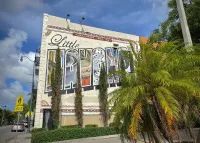
Miami is a major coastal city located in Florida United...
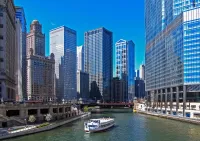
Chicago is the most populous city in Illinois and the...
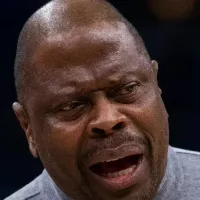
Patrick Ewing a Jamaican-American former professional basketball player and current...

New Orleans is the most populous city in Louisiana and...
Trending
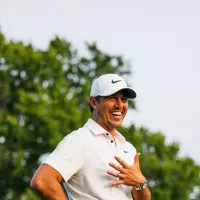
7 months ago Koepka and DeChambeau attend Ryder Cup dinner, Bradley sees new side of golf.
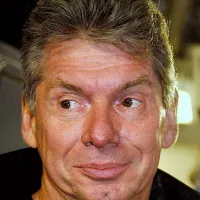
9 months ago Cody Rhodes Crushes John Cena After Promo Battle on WWE Raw, March 31, 2025
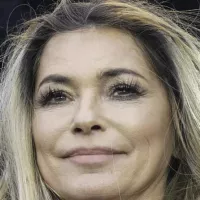
Shania Twain is a highly successful Canadian singer and songwriter renowned as one of the best-selling music artists of all...

6 months ago Supreme Court upholds Tennessee's ban on gender-affirming care for transgender youth: Landmark case.
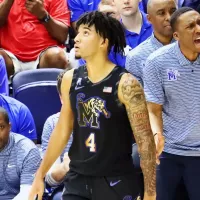
7 months ago PJ Haggerty Transfers to Kansas State, Withdraws from 2025 NBA Draft.
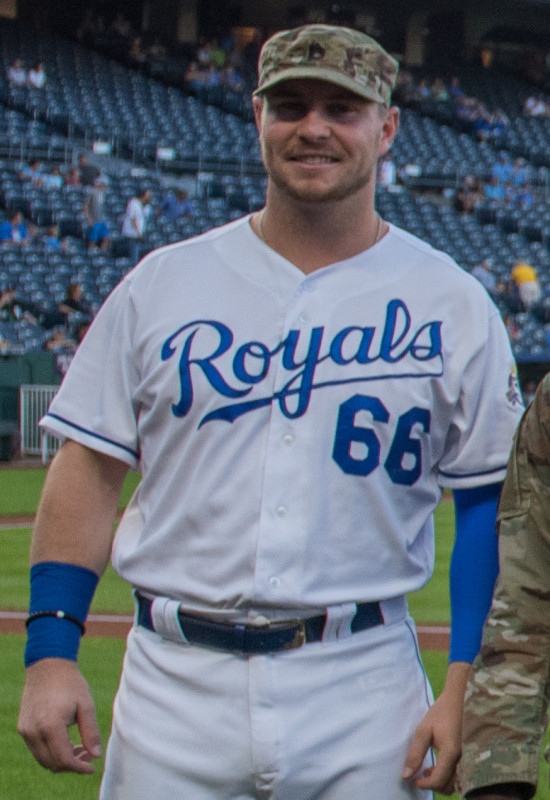
Ryan O'Hearn is a professional baseball first baseman currently playing for the Baltimore Orioles in MLB Previously he played for...
Popular

Tucker Carlson is an American conservative political commentator known for...

Candace Owens is an American conservative political commentator and author...

XXXTentacion born Jahseh Dwayne Ricardo Onfroy was a controversial yet...

Ben Shapiro is a prominent American conservative political commentator media...

William Franklin Graham III commonly known as Franklin Graham is...
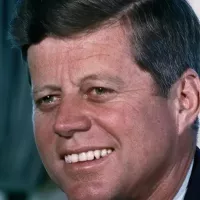
John F Kennedy JFK was the th U S President...